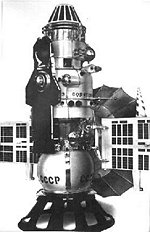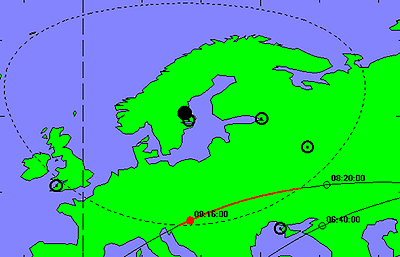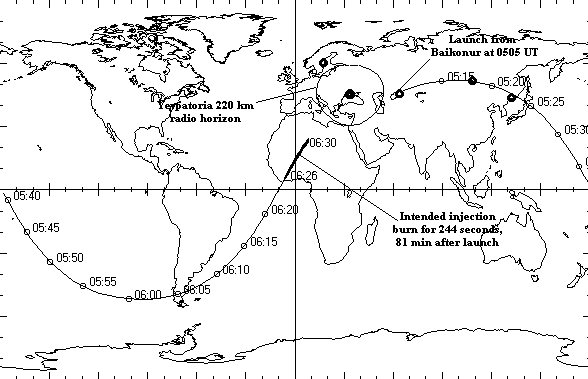 Expecting
a companion to Venus 7
Expecting
a companion to Venus 7 Expecting
a companion to Venus 7
Expecting
a companion to Venus 7This particular morning, a Saturday, I was on weekend leave from the Army, where I was serving my term as a conscripted soldier. I had left the base in the nearby city of Uppsala and was twidlling my radios. I had a two-elent Yagi for TV channel 4 and a frequency converter that brought the 66 MHz band into the tuning range of my old Lafayette HE-30 shortwave receiver. I also had an Eddystone EC-10 receiver humming away, tuned to the Soviet space frequency band just below 20 MHz. (By the way, the EC-10 had OC71 and OC171 transistors - germanium transistors!!!!)
At 0706 UT I had picked up signals on 19.995 MHz typical of those coming from the recovery capsule of Soviet reconnaisance satellites. I phoned Geoff Perry and 0800 to find out that these had been heard for several days and were probably from recovery team practice. After hanging up I started the VHF rig and just aimlessly tuned around. It was fun hearing VHF/FM broadcast stations in the Baltic states suddenly appearing for a second or so being bounced across the Baltic by meteor trails.
SATELLITE: Kosmos
359
SITE: Skutskar
Lat: 60.39 Long: 17.25
| Date | Time UT | Latitude, N | Longitude, E | Altitude
(km) |
Range
(km) |
Azim | Elev |
|---|---|---|---|---|---|---|---|
| 1970 Aug 21 | 08:16:00 | 46.22 | 18.19 | 221 | 1617 | 177.3 | 0.7 |
| 1970 Aug 21 | 08:17:00 | 47.85 | 23.52 | 224 | 1492 | 161.0 | 2.1 |
| 1970 Aug 21 | 08:18:00 | 49.20 | 29.18 | 230 | 1498 | 143.3 | 2.2 |
| 1970 Aug 21 | 08:19:00 | 50.23 | 35.11 | 236 | 1634 | 127.3 | 1.1 |
 Kosmos
359, a failed Venus probe, probably separated from the fourth stage of
the booster. This last stage, with the Venus probe still attached, was
what was called Sputnik 7 by Soviet authorities back in early February
1961.
Kosmos
359, a failed Venus probe, probably separated from the fourth stage of
the booster. This last stage, with the Venus probe still attached, was
what was called Sputnik 7 by Soviet authorities back in early February
1961.
In a book by Alfred J. Zaehringer, "Soviet Space Technology", published in 1961, Sputnik 7 was said to have had a transmitter on 66.2 MHz. So, what I probably heard was the escape stage that had not finished its burn. When you look at the map of the ground track and the radio horizon from my location (left) you realize that a stroke of sheer luck made me hear the signals. Maximum elevation 2.2 degrees!
The flight profile of Venus 7 reveals what was planned for the Venus probe (V-70 no. 631) that became Kosmos 359. The fourth stage of the Molniya booster ignited 81 minutes after launch from Baikonur and fired for 244 seconds. The map below shows where this woul have taken place in the case of Kosmos 359. If a ship was placed in the Gulf of Guinea it could have caught the start fo the burn and when Yevpatoria acquired the craft the burn would have been completed, unless a ship was stationed in the Mediterranean! Well, the burn was not completed and the batteries in the fourth stage lasted until the next pass over Europe when attitude control had been lost and the craft was tumbling wildly.
